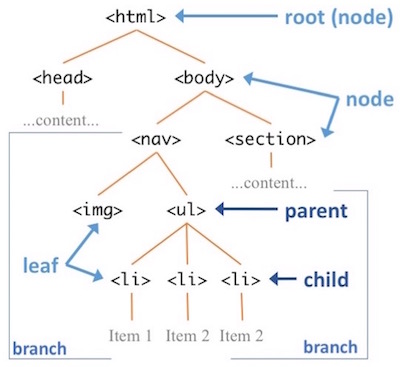reading-notes
Aloysious' Codefellows Reading Notes
Code 201 Reading Notes
Class 6
<== Previous Lesson Next Lesson ==>
<== Home 🏠
The DOM, Domain Modeling, and Introduction to Objects

The problem domain is the hardest part of programming
Object Literals (pp.100-105) [Duckett JavaScript]
Using an object literal, you both define and create an object in one statement.
An object literal is a list of name:value pairs (like age:50) inside curly braces {}.
The following example creates a new JavaScript object with four properties:
Example
var person = {firstName:"John", lastName:"Doe", age:50, eyeColor:"blue"};
Using the JavaScript Keyword new
The following example also creates a new JavaScript object with four properties:
Example
var person = new Object();
person.firstName = "John";
person.lastName = "Doe";
person.age = 50;
person.eyeColor = "blue";
In JavaScript, objects are king. If you understand objects, you understand JavaScript.
In JavaScript, almost “everything” is an object.
- Booleans can be objects (if defined with the new keyword)
- Numbers can be objects (if defined with the new keyword)
- Strings can be objects (if defined with the new keyword)
- Dates are always objects
- Maths are always objects
- Regular expressions are always objects
- Arrays are always objects
- Functions are always objects
- Objects are always objects
- All JavaScript values, except primitives, are objects.
JavaScript Primitives
A primitive value is a value that has no properties or methods.
A primitive data type is data that has a primitive value.
JavaScript defines 5 types of primitive data types:
- string
- number
- boolean
- null
- undefined
Primitive values are immutable (they are hardcoded and therefore cannot be changed).
if x = 3.14, you can change the value of x.
- But you cannot change the value of 3.14.
JavaScript objects are containers for named values, called properties and methods.
With JavaScript, you can define and create your own objects.
There are different ways to create new objects:
- Define and create a single object, using an object literal.
- Define and create a single object, with the keyword new.
- Define an object constructor, and then create objects of the constructed type.
Document Object Model (pp.183-242) [Duckett JavaScript]
refer to book, it has the best visuals
- Working with the DOM Tree (pp.188-189)
- Caching DOM Queries (pp.190-191)
- Accessing Elements (pp.192-193)
- Methods that select individual elements (pp.194)
- Selecting elements using ID attributes (pp.195)
- Nodelists / DOM queries that return more than one element (pp.196)
- Selecting an element from a nodelist (pp.198-199)
- Selecting an element using CLASS name (pp.200)
- Selecting an element by TAG name (pp.201)
- Selecting an element using CSS selectors (pp.202-203)
This topic is huuuuuuuuge oOf.
<(^.^)>refer to (pp.239)
What is the DOM? - Medium Article
Reading
From the Duckett JavaScript book:
- Chapter 3: “Object Literals” (pp.100-105)
- Chapter 5: “Document Object Model” (pp.183-242)
<== Previous Lesson Next Lesson ==>
<== Home 🏠